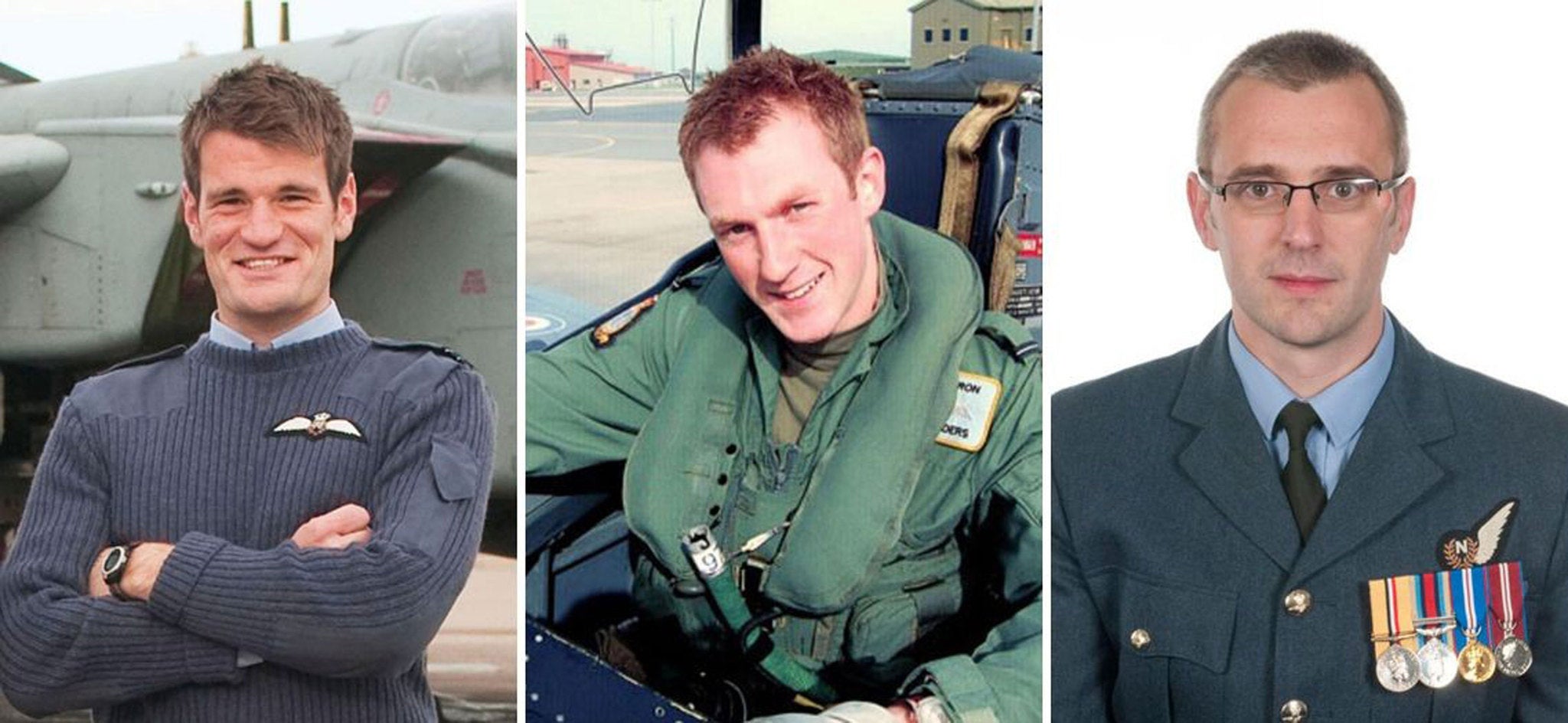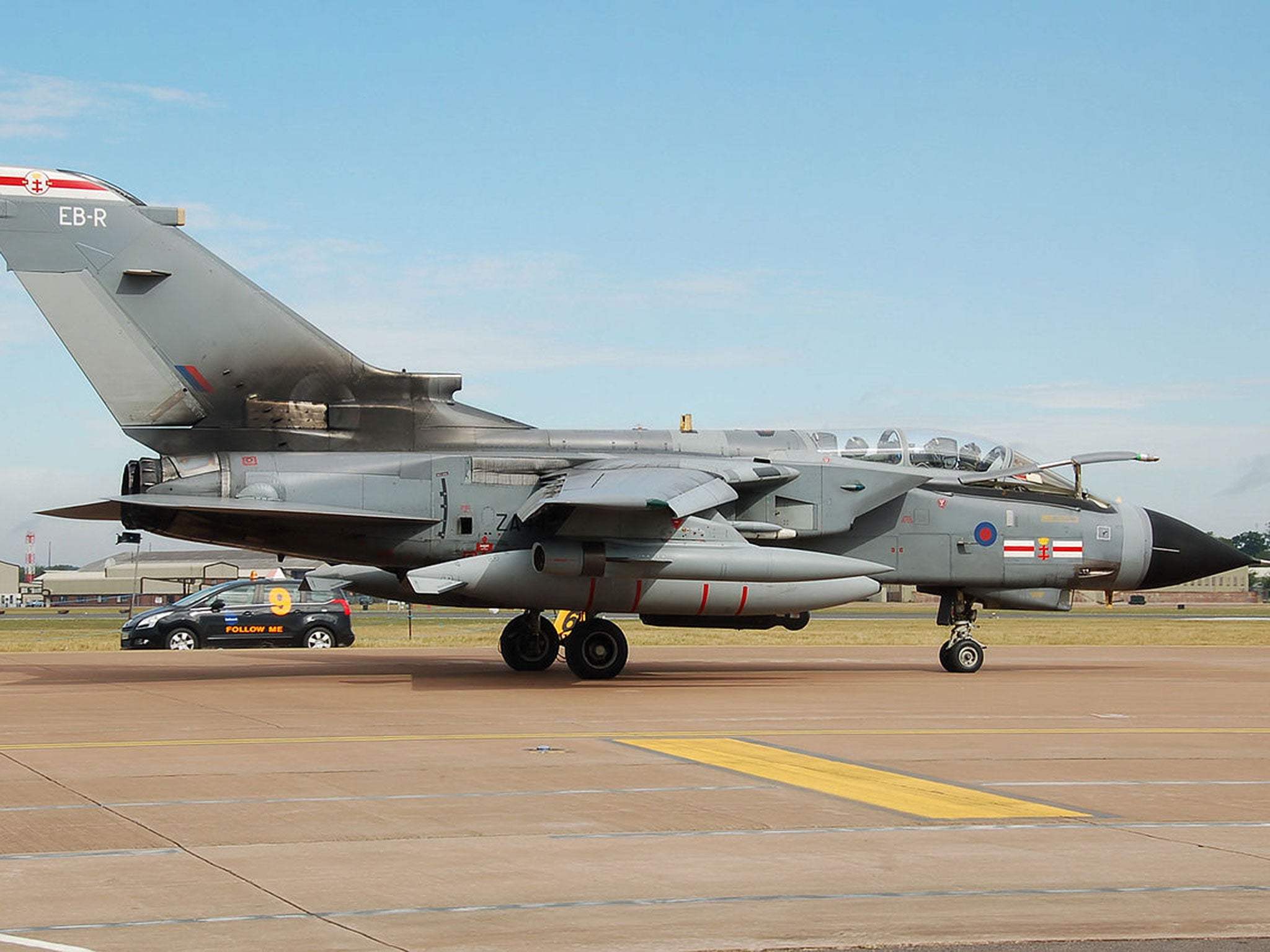One of three airmen killed in RAF Tornado collision had 'fear of flying' and had 'reached crisis point' just months before accident
The weapon systems operator who was in the rear seat of one of the Tornados, with a student pilot, had a fear of flying at medium level

Your support helps us to tell the story
From reproductive rights to climate change to Big Tech, The Independent is on the ground when the story is developing. Whether it's investigating the financials of Elon Musk's pro-Trump PAC or producing our latest documentary, 'The A Word', which shines a light on the American women fighting for reproductive rights, we know how important it is to parse out the facts from the messaging.
At such a critical moment in US history, we need reporters on the ground. Your donation allows us to keep sending journalists to speak to both sides of the story.
The Independent is trusted by Americans across the entire political spectrum. And unlike many other quality news outlets, we choose not to lock Americans out of our reporting and analysis with paywalls. We believe quality journalism should be available to everyone, paid for by those who can afford it.
Your support makes all the difference.A highly critical report by air accident investigators has revealed that one of three crewmen killed when two RAF Tornado GR4s collided had a fear of flying and had just three months earlier "reached crisis point" and "could not face flying".
The long-delayed report into the fatal collision involving the two jets over the Moray Firth on July 3, 2012 found there were 17 contributory factors, including the lack of a collision warning system (CWS) on both aircraft.
The weapon systems operator (WSO), who was in the rear seat of one of the Tornados, with a student pilot, had a fear of flying at medium level. The report states that this did not directly cause the accident but was probably a factor in the crash.
Flight Lieutenant Hywel Poole, 28, Flt Lt Adam Sanders, 27, and Squadron Leader Samuel Bailey, 26, died in the crash. A fourth crewman was badly injured. The four men were all based at RAF Lossiemouth in Moray.
In a critical and wide-ranging report, the Military Aviation Authority (MAA) said there was "much opportunity for this mid-air collision to be prevented".
Investigators concluded the cause of the accident was "a lack of recognition of converging flight paths" which saw both aircraft in the same airspace at the same time.
The report notes that there is no collision warning system (CWS) on board the Tornado fleet. Such a system has been recommended for the Tornado fleet for a number of years, but has been delayed.
Among other contributory factors included in the report were poor weather conditions, "shortcomings" in the risk management process and "ineffective supervision" at squadron level of the aircraft involved.

The report also concluded that a care plan for the WSO with a fear of flying was not formalised. It states that the WSO had a "phobic anxiety disorder related to flying, primarily affecting him at Medium Level.
On April 25th 2012, just three months before the crash he had presented to the Station Medical Officer stating he had reached a "crisis point", and felt "unfit for flying duties" due to the anxiety he felt. He was diagnosed with a phobic anxiety disorder.
The symptoms of his phobia included "fear of falling, sweaty palms, dry mouth, abdominal discomfort and feeling disabled until the aircraft returns to LL (lower level)".
The WSO did not fly for a 21 day period before recommencing flights.
Video: Rescue operation of the RAF Tornados crash in 2012
On the day of the accident, the report notes that the jet he was in made a "rushed" descent to low level and this was done in "marginal weather" conditions.
It states that his decisions were not commensurate with his recognised experience and professional standing", but concluded there was no evidence that his anxiety affected his decision making.
The report concludes that an onboard collision warning system would have helped to prevent the Tornado GR4s from colliding.
An MoD spokesman said the investigation found the lack of a CWS did not cause the accident but was one of a number of factors which made it "more likely to happen".
Commenting on the report's findings, MAA director general Air Marshal Richard Garwood said: "Tragically, there were many opportunities to enable de-confliction but, for a number of reasons, including chance, this did not happen.
"As with many accidents, bad luck has to be part of the explanation, particularly in the closing stages when they were belly up to each other; a few feet difference in altitude of one of the aircraft would have created a near miss rather than this tragic accident.
"Unfortunately, the final safety barrier which would have generated awareness of their close proximity did not exist as the Tornado GR4 is not fitted with a CWS."
The report's authors also set out the background to the procurement of CWS for the aircraft, saying it has suffered from "numerous delays" and that "financially driven decisions made by the MoD as far back as 2005" resulted in there being none fitted at the time of the accident.
It added: "It would also be easy to focus on the lack of CWS as the cause of this accident but CWS was just one important mitigation in the prevention of a mid-air collision."
A MoD spokesman said: "While accidents like this are very rare, this demonstrates that military flying can never be without risk.
"The RAF is already implementing the lessons learnt from this tragic accident and now uses a flight planning aid to highlight potential aircraft conflicts prior to flight.
"The MoD is committed to reducing the risk of mid-air collisions and has developed a collision warning system for Tornado which is currently being trialled, and is expected to be introduced from the end of 2014."
Join our commenting forum
Join thought-provoking conversations, follow other Independent readers and see their replies
Comments